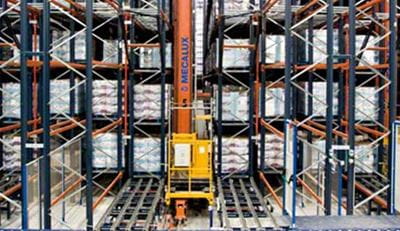Benefits and Risks of Automation
The benefits of automation can be extensive, depending on the type of application you choose. However, generally speaking, automation can have a significant impact on improving your productivity, reducing costs, better utilizing your labor force and improving quality.
However, as with everything, there are potential pitfalls to automation, especially if it is not applied correctly or given the appropriate amount of consideration and cost justification before implementing. Automation can often be inflexible, require a significant capital investment and require new skill sets within your organization to operate and maintain it.
The most important step is to perform a cost/benefit analysis with your finance team involved, to determine what will be the most cost effective solution for your organization. Hiring a third party to also evaluate your operation is usually worth the investment.
Types of Automation
Today there is a wide array of automation technology that can help you meet and exceed your operational goals, if applied correctly. Below is an overview of some of the technologies available on the market today that might be considered when looking at these types of solutions. Also please refer to Illustration #1 that outlines each technology’s rating when looking at initial cost, effort to implement and expandability.
- Barcode Scanning: Automated data collection techniques such as barcode scanners lower labor costs by reducing overall human touches and providing accurate information in real time. The accuracy of the data gathered through this technology is also dramatically improved. Data collected manually may contain the element of human error, whereas automated data collection can expect an error rate better than 1 in 1 million. The time saved on error correction can lead to lower labor and inventory management costs as well as better quality control for warehouse management.
- Pick-to-Light & Put-to-Light: This picking technology that prompts activities via a light allows increased pick rate productivity, accuracy and cost efficiency of this labor-intensive operation by reducing walk time, eliminating reading errors and simplifying the task throughout the pick process. Pick-to-light and put-to-light systems are one of the most cost-effective means of providing dramatic improvements in warehouse productivity and picking accuracy.
- Voice Enabled Work: This voice enabled technology prompts and confirms transactions verbally which allows for a hands free operation. The biggest benefits and best return on investment are obtained in low margin, high volume, and labor intensive case picking warehouse operations. The use of voice technology delivers this by freeing both the hands and the eyes for the picking task.
- Automated storage and retrieval systems (AS/RS): This technology consists of a variety of computer-controlled systems for automatically placing and retrieving loads from defined storage locations. They are typically used in applications where there is a very high volume of loads being moved into and out of storage. An efficient AS/RS system helps companies cut expenses by minimizing the amount of unnecessary parts and products in storage, and improving organization of the contents of a warehouse.
- Automated Guided Vehicles or Self-Guided Vehicles (AGV/SGV): This automation technology is a mobile robot that follows markers or wires in the floor, or uses vision, magnets, or lasers for navigation. They are essentially unmanned lift trucks that have been proven to reduce the damage to inventory, make production scheduling more flexible, and reduce staffing needs when used for repetitive horizontal moves.
- Conveyor Systems: Conveyor Systems are machines intended to handle products routinely from one position to another. They are one of the most conventional automation technologies applied today, mainly because they are a highly efficient way to move pallets, products or orders through a facility and/or between levels, and can handle a wide array of applications from very basic to extremely complex.
- Sortation: Automated sortation systems are incredibly valuable for businesses that can no longer efficiently and effectively control the distribution, picking, sortation, and handling processes related to large amounts of inventory. Simplifying operations and reducing the need for human intervention, these systems increase throughput, improve productivity, and ensure better accuracy.



